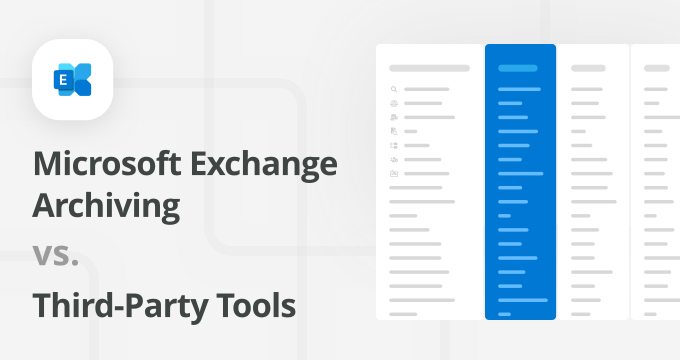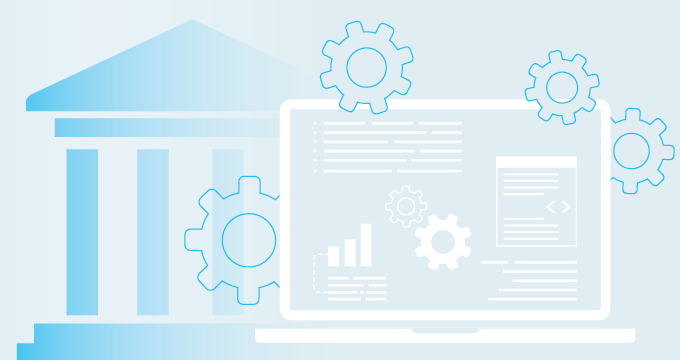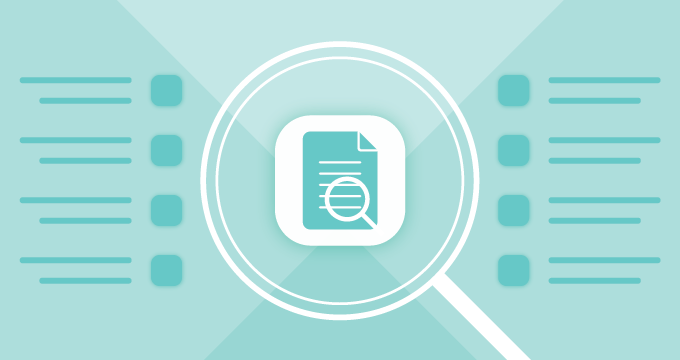|
|
IT Department Challenges: Introduction |
The function of IT departments today has long evolved from fixing system failures and computer maintenance to shaping the business operation and strategy. IT sectors have become important business pillars, burdened by the ever-growing responsibility that stretches from technical fixes to regulatory compliance.
In that respect, most technology researchers and professionals claim there is a huge transformation process happening in IT departments across all industries – a process that is necessary for improving companies’ efficiency, data security and consequently, overall business performance.
This imposes great challenges on Chief Information Officers to adapt their approach to IT sector management and employ forces that can help them move towards the desired transformation.
Some of the key challenges recognized here are:
Cyber threat protection
All industries have one thing in common – cybersecurity is their top priority. With growing concerns regarding data security and privacy, IT departments are obliged to manage and strengthen their security standards and procedures without compromising data safety.
Data management
The amount of data shared and exchanged digitally is progressively growing. IT departments are responsible for managing the entire team’s data and making sure that the shared information is protected at all times.
Data classification
In the age of Big Data, data classification and optimized eDiscovery processes are of crucial importance, especially in cases of legal disputes that can cost companies both money and reputation.
Regulatory compliance
With the growing importance of digital data, there are a number of laws and regulations that companies have to comply with. Different industries have to meet different legal standards and individual policies, primarily regarding email communication. IT departments are forced to track these changes with respect to their company’s industry.
Cost optimization
In huge systems, team members of IT sectors have to respond to technical and operational needs of all individual employees as well as the system as a whole. For these purposes, they often have to employ additional staff or external software solutions, which affects the company’s budget.
|
|
The Role of CIO in IT Departments |
Faced with the above-explained challenges, CIOs need to find the way to innovate complex business structures, collaborate with other company sectors, enhance system security, balance the budget and find room for cost savings, as well as motivate IT staff throughout the whole process.
In large IT departments, CIOs have to establish a well-organized management structure based on specialized skills, which would act as the company backbone, no matter the type of industry. They also need to find the most efficient way to establish links between different company units, without compromising data safety and availability. On the other hand, in small and midsized businesses, CIOs face the challenges of low budget, which prevents them from using expensive software or employing a great number of skilled specialists.
“CIOs have a great opportunity to lead their enterprises in exploiting information flows from digital technologies. By playing this role, they can better enable decisions that optimize business processes and performance.” – Kristian Streenstrup, research VP and Gartner fellow
Moreover, with a broad spectre of services they need to perform on a daily basis, IT teams and their CIOs can hardly focus on making long-term strategic shifts. CIOs have too many managers and employees to oversee, and IT team members often employ too many external solutions for internal problems. All this slows down the workflow of IT departments and asks for an integrated IT system that would meet all the challenges from a unique in-house source.
Consequently, in order to improve the IT department’s performance, it is necessary to clearly define the IT responsibilities and responsibilities of their CIOs with respect to other company sectors. It is also necessary to focus on digital data management optimization, and introduce a single reliable solution that would address different aspects of email communication. In this sense, email storage, protection and optimization is a constant worry for IT managers and team members. And the number of emails sent and received keeps growing.
|
|
How Email Archiving Can Help |
To effectively store, manage, maintain, protect and retrieve data if necessary, IT departments need to forget the old methods of data management. Backing up company data by using traditional methods such as tapes, disks or de-duplication devices simply doesn’t do the trick any longer. These techniques still matter when it comes to the short-term security of the company’s intellectual property, but they can no longer serve as the longterm strategy for data protection and preservation.
With the amount of data amassing in employees’ inboxes and on company servers, IT departments often lose the race with the rapid growth of data.
This is where email archiving steps in, providing not only the necessary information backup, but also indexing of all data and metadata and offsite protection for significantly longer periods of time. It makes data easily searchable and stores it in a read-only format so that it cannot be modified or compromised, but only handled and reused by authorized users (company managers and employees).
“There are 2.586 billion email users worldwide, including both business and consumer users.” – Radicati Group
A powerful aspect of email archiving solutions is that they centralize data management and put the pressure off the company servers by strategic email de-duplication and deletion of spam. This is further followed by optimizing the amount of data handled and improving the eDiscovery processes.
With this simple tool, IT departments can improve their productivity by enabling all company employees to optimize their data management and classification without complex and expensive software or constant monitoring by an IT specialist. Email archiving thus directly influences the cost optimization for data storage and maintenance and productivity of the IT staff. In this process, email archiving also allows CIOs to improve business intelligence by finding patterns and trends that are not visible in the deep forest of unstructured piles of information.
|
|
How Does Email Archiving Address IT Department Challenges? |
In the introduction, we recognized some of the main challenges of IT departments. In the following section, we’ll look at how they can be easily and strategically addressed with the help of email archiving.
Cyber threat protection
With email optimization and indexing, spam filtering and custom blacklists and whitelists, email archiving helps IT department have a solid defense against intellectual property theft and cyber attacks like phishing and ransomware.
Data management
Email archiving is a simple in-house tool that safely compresses, deletes and deduplicates email messages in every employee’s inbox. It significantly lowers the amount of data saved and stored on company servers, preventing system crashes and problems with the lack of storage space. In the event of unexpected technical problems, the archived data can be safely and quickly restored, eliminating the risk from loss of valuable data and reducing time spent on data recovery.
Data classification
With custom indexing and centralized mail server handling, email archiving improves search capabilities and ensures eDiscovery promptness. All archived emails are organized and indexed in accordance with company needs. This allows fast searches and saves time. A clear benefit is that all employees are empowered to perform these tasks, thus removing the unnecessary burden from IT department members.
“Modern anti-spam filters block more than 99.99% of junk messages. Spam is still big business. Unsolicited junk mail accounts for 86% of the world’s e-mail traffic, with about 400 billion spam messages sent a day.” – Talos, a digital threat research division of Cisco Systems
Regulatory compliance
This might be one of the most important arguments in favor of adopting an email archiving solution. Handling compliance regulations can take a tremendous amount of IT department’s time and remove their focus from strategically and technically more important aspects of their work. Nonetheless, the Federal Rules state that any organization subject to litigation must be able to locate, retrieve and respond to data requests in a timely manner. Email archiving features allow IT departments and company employees to search and find sensitive emails and prevent them from being deleted, meeting the legal requests timely and smoothly.
Cost optimization
Shifting the responsibility of data management from IT staff to employees (end users) can save a substantial amount of time and money. An IT employee needs around 30 minutes on average to retrieve a lost file from a backup tape. With an effective email archiving system in place, the end-user needs around 5 minutes to get the same information, without any help from the IT colleague.
|
|
Conclusion |
Digital transformation sits atop the strategic agenda for enterprises, according to a Forbes Insights and Hitachi survey of 573 top executives worldwide.
With the progressive growth and importance of digital data shared and exchanged in business communication, IT departments and their CIOs need to undergo necessary transformations to avoid potential risks and damage that would affect the overall business performance and success. To sum up, in order to take the road to effective digital transformation, IT departments need to:
- interact with other business sectors to create a long-term strategy,
- optimize their workload and costs spent on software and IT employees’ time, and
- include email archiving as a useful tool to meet regulatory compliance and centralize the approach to data management and protection.
To find out more about how an archiving solution can improve the efficiency of your IT department, contact us or schedule a personal demo.











